As an Amazon Associate I earn from qualifying purchases.

I’ve always wondered about who makes money on all those hot sauce bottles arrayed in the condiment aisle of the supermarket. Especially when it’s easy to make homemade hot sauce.
Think about it: My local Raley’s carries several dozen varieties of hot sauce, and there are thousands of brands of hot sauce out there, ranging from the venerable Tabasco (one of the only hot sauces I still buy) to the ridiculous Dave’s Insanity Sauce, which is so hot it really ought to be a controlled substance. It’s simply a case of too much choice, and not enough difference in the sauces to matter.
I think one of the reasons there is so much hot sauce on the market is because it is so easy to make at home.
(If you’re looking for more of a challenge, I have a recipe for a fermented Tabasco-style hot sauce, too.)
I am imagining all these inspired home cooks in Texas or Florida or New Jersey who were happy making their own sauce, when someone said: “You oughta bottle that!” They do, hemorrhage money, then promptly go out of business a year or so later. Mercifully, I’ve never been tempted to sell my own hot sauce. But if I did, it’d be this one.
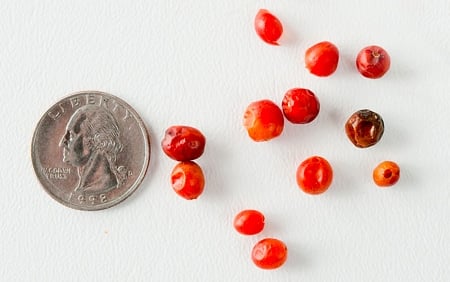
And since I am about to give you my recipe, I guess I won’t be making my fortune (or bankrupting myself) on “Hank’s Cray-zey Hawt Sauce” anytime soon. What makes my rendition of homemade sauce so special is the chile — I use wild chiles for this recipe.
Now before I go on, know that any chiles you want to use will work, fresh or dried. But my advice is to make your homemade hot sauce with a single type of chile at first, so you can really enjoy the nuances in that variety, whether it’s serranos, habaneros, poblanos, or any other type, even wild.
Yep. Wild chiles. They exist. Known mostly as chiltepin, pequin or bird’s eye chiles because, I suppose, they are small and round like a bird’s eye, these grow wild in much of Central America — and have the distinction of being the only chile peppers native to the United States. You can forage for them in southern Arizona, New Mexico and Texas, and they reportedly live in southern Florida as well.
I’ve known about chiltepins for years — I am a serious chile head — and I now finally grow them at home, so I have a stash now. You can buy them in Tucson, or in some Mexican markets, too. I’ve found fresh chile pequins in Mexican markets in Brownsville, Texas, for example. You can also buy chiltepin chiles through Gourmet Sleuth. Apparently when the harvest is on, locals drop what they’re doing to gather the little chiles because they bring such a high price — up to $30 a pound in some years.
You can also buy seeds online and grow your own, although the seeds are really hard to germinate; soaking them in chamomile tea for 2 days first will give you a better germination rate.
As for flavor, it’s smoky, hot and rich all at once. The closest store-bought equivalent I can come up with in flavor is Cholula hot sauce, which is another of my favorites. The chiltepin chiles whack you right up front, but then go away — it’s the opposite of a red jalapeno, whose heat can sneak up on you a few minutes later.
I use this hot sauce on pretty much everything: Eggs, Mexican food, cold chicken or pheasant, in tomato sauces, on clams… you get the point. Use it wherever you would use any normal hot sauce.
Homemade Hot Sauce
Ingredients
- 6 garlic cloves, chopped
- 1/2 cup chiltepin chiles, or 2/3 cup Thai chiles
- 1 teaspoon smoked salt
- 1/2 cup water
- 1 cup cider vinegar
- 2 tablespoons sweet paprika
- 1/4 teaspoon xanthan gum mixed with 2 tablespoons cold water
Instructions
- Put everything except the xanthan gum (if using) into a blender and puree for 1-2 minutes. You really want everything blitzed here, so if your blender heats up too much in 2 minutes, stop, let it cool, and continue.
- Pour the xanthan gum that's been mixed with the water into the blender, cover and buzz for another 30 seconds.
- Pour into a bowl or large jar and let this settle for 1 hour to allow all the trapped air you introduced into the sauce while blending to escape. If you skip this step your sauce will not hold together as well. Bottle and store in the fridge for up to 9 months.
Notes
Nutrition information is automatically calculated, so should only be used as an approximation.
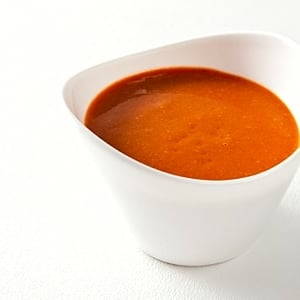
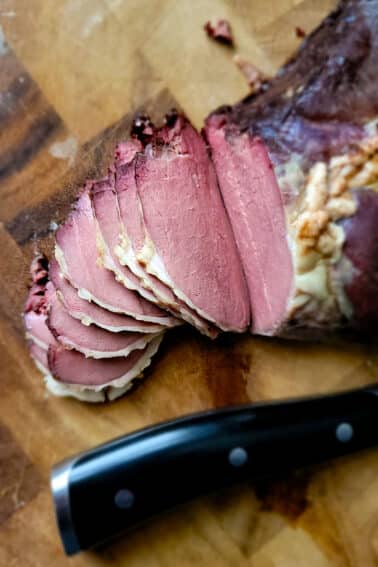
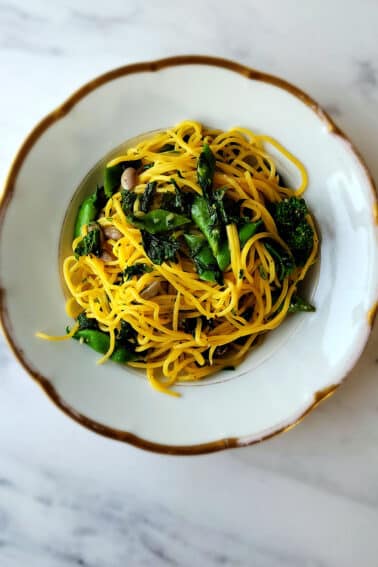
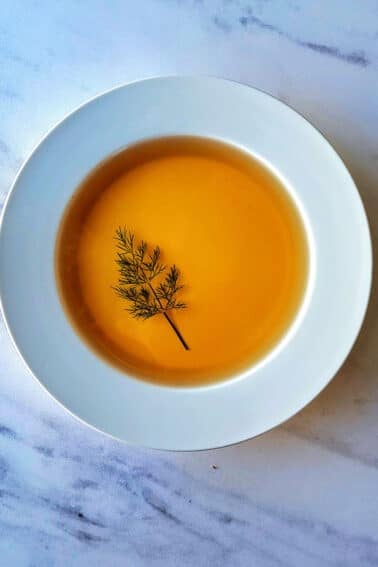
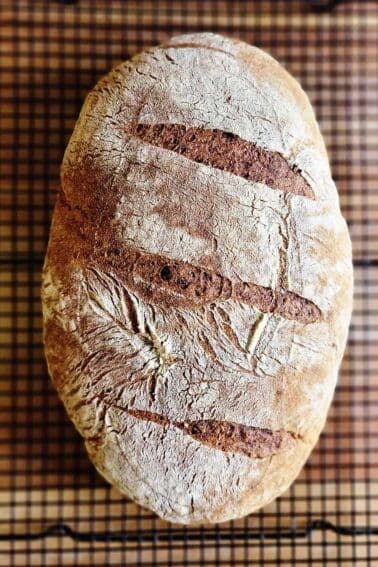
Took a couple of years to get these growing in our Sacramento summer. They have a great flavor! Will try the sauce recipe with some mods and enjoy!
Bentley, you have it correct. Chili-tepin is the little round ones, Chili-piquin are the elongated ones. The ‘*tepin’ peppers provide a quick flavorful burn and subside, ‘pequin’ provide a similar burn with less flavor and it last a bit longer on the pallet. My personal favorite are the small round ones, chilitepin. Gonzales Texas.
According to my considerable research, pequins are domesticated (and different) variants of the Tepin chile (Chiltepines). Pequins are popular in Texas apparently. Tepin and Chile are Aztec words for Flea and Chile. Some speculate that the chiltepin was so named for it’s sharp bite (arrebarato?), or perhaps it’s dimunitive size. Peguins are more elongated that chiltepin, and have a slower, longer burn. Chiltepines make the better hot sauce. My Mexican-American father in law gave me a “Chitopena” plant, and I started researching the whole subject. Very important to our Hispanic heritage. To correct an earlier post, chiltepins are, in a sense, the mother of all chilies, but is only one of many similar native chilies throughout South and Central America. The birthplace for all chilies is undisputably an area bordering Ecuador, Boliva, and Peru. The natural chilies were spread throughout the America’s by birds, and THEN, were domesticated by the Maya, Aztecs, etc. I love chiltepins.
Try this:
Roast dried chile pequins in a 300 degree oven for about 20 minutes.
Cool, then grind into a fine powder in a spice grinder. If you like, sift through a wire collander to remove the seeds.
The aroma of these roasted pequins is unbelievable and the taste is awesome – gopod heat and more flavor than cayene ever dreamed of having.
Sprinkle on food instead of adding hot sauce. Heat & flavor without the vinegar.
I made this recipe with pequins I ordered on line, and it’s delicious with a no-joke heat level.
I have had two of these plants, for 3 or 4 years now, a gift from my neighbor. Central Texas. They must be chiltepin, small rounded oval peppers that go green, orange then red, no purple. I only get a few ripe at a time, my suspicion was birds and after reading a few of these articles I can see why, we have many many white wing dove that roost in the area. I certainly want to try to propagate them and in the future cover with the netting I use to keep the birds from my tomatoes.
I was given a plant years ago and it self-propagates quite easily in my garden here in Houston. If I had known they were so pricey, I would have saved more of the plants! This year, since I’ve installed an automatic watering system and it gets daily watering and a little more sun, it has gone CRAZY! I will try your recipe, among others, for my son-in-law, who loves hot sauces.
Roberto: While I get your point, these other chiles are now substantially different from the original chiles, which, as you correctly point out, are indigenous to an area from south Arizona and Texas down to the Andes. Five hundred years of plant breeding makes a difference.
But you are wrong about pineapples and potatoes. Neither is from Mexico. Pineapples are from an area around Paraguay and Brazil, potatoes are from the Andes, mostly Chile and Bolivia.
Hi All;
I wish people would learn, ALL HOT PEPPERS are from MEXICO & Central America, through the trade ships of old is how peppers got all over the world. There is no such thing as a Thai Chile, or Japanese Chile, Italian Chile. Just like where are Potatoes or Pineapples From, they are both from Mexico, not Hawaii or the Philippines or Ireland! Thanks to trading ships again & the Dole company stuff gets shipped around the world! See you learn something every day!
Here in Tucson I’ve had a plant for about 10 years that readily propagates itself in the spring. Seedlings everywhere!
It was bought originally at the Botanical Garden sale as a Baboquivari Chiltepin. The fruit is oval and HOT. It goes from green to orange to red. No purple.
With the final harvest today I’m going to make your salsa, but also try pickling some, then steeping in simple syrup to use with appies, or in cocktails… Ooh la!
I have been growing chiltepins this year here in Middletown, PA. I just used a modified version of this recipe for my hot sauce. Instead of using xanthan gum I used some frozen okra as a thinkener.. I also add carrots to mine for a sweeter flavor and some slightly cooked onions. I’ve been growing my plants outdoors in pots and before we had snow a few weeks ago I brought them inside. They are still producing lots of ripe peppers. I have enough each week to make another batch of sauce from 6 plants. The largest of these plants is 4 feet tall. I’ve made 2 batches of sauce in the last 3 weeks. I figure with all the peppers still ripening I’ll make at least 2 or 3 more batches before it’s done for the season.
Thanks again for sharing your recipe with us!
Rich
Hello,
I’m a native southern Arizonan. My dad working on a local ranch we get Chiltepins every year…from the wild. We are addicted to them. This year I tried growing them with success. I have 9 plants about 1.5 feet tall. They are currently blooming and giving chilies…purple at the moment.Once they ripen I am definietly going to try this recipe!
Landed on this site today by searching “Chiltepin red pepper”. We found a pepper plant in our new backyard in Corpus Christi and soon discovered it’s a chltepin! It’s completely LOADED right now, and one little guy has turned nice and red…we are excited to see the rest follow along! We’ll try this recipe out as soon as we’ve harvested the first batch. Thanks for the recipe!
What we call Bird Pepper in South Florida is described and pictured here:
https://www.regionalconservation.org/beta/nfyn/plantdetail.asp?tx=Capsannuglab.
I’ve gotten plants of it from native plant raffles and grown it and gotten very few peppers from it – birds really do like it! Will try your sauce recipe with other garden chili peppers – sounds good. Wonder if it would work with the smoked chilies I have in the freezer, since it’s all getting pureed anyway?
Hello again!
Just to let you know, there will be heldm, in Monterrey, Mexico, the first Festival of kid goat and chile piquín, from Sep 15th to 18th. There will be a gastronomical sample, folkoric music and dances, artisan market and conferences about the raising of goats and the growing of chile piquín.
http://www.festivaldelcabrito.com
I tried growing chiltepins from seed before with not much success so this year I bought seedlings from a nursery. https://www.vinlandvalleynursery.com/
They arrived as 6″ plants which after they had a chance to recover from the 3 day shipping process I transplanted them into pots as I plan on bringing them in before the first frost. I live in south central Pennsylvania. The 6 seedlings I bought are producing like crazy and have been since the middle/end of July when the first flowers appeared. But with 80 days for the fruit to mature I’m figuring till the beginning of Oct. to start harvesting them. I also used some fertilizer when I transplanted them and when they began to flower. Something made for hot peppers. I put up netting around them because where I live I didn’t think they’d do well having the birds eat them and distribute the seeds.
Thanks for sharing the recipe I’ll give it a try when the peppers are ripe.
I successfully grew mutton peppers (Central American pepper passed along in my family), which are also hard to germinate, by using the suggestions on this website: https://www.ecoseeds.com/Pepper.growing.tips.html
Your blog is wonderful. I cook a fair amount of game, and love learning about edible wild plants.
Just made this tonight with Thai Bird Peppers that were picked from our garden on Sunday and a few roasted red peppers (as suggested in another comment). I am leaving it in the refrigerator overnight to rest. My question is: Should this be strained to remove the bits of seed that didn’t puree? Otherwise it looks, smells and tastes great
I have a small bag of pequin peppers (more oblong than the chiltepin you picture) that I bought on a whim from a local spice shop that I’ve never known quite what to do with. Thought I’d throw them at random into a roja sauce with other dried chiles, but a hot sauce sounds more fun.
Thanks for the comments.
I just talked with a friend from my shooting range who has a nursery, and chated a while about these chiles. Seems that piquín or chile del monte (wild chile) tends to be a little special about handling, so very few people grow it, most is collected directly from the wild. that´s why the sauce makers that have bigger operations rely on some variety also called piquín, but that is growed in Chiapas, in the southmost part of México. It is spherical but is slightly pointed, and you can also pick it out because when green one side is slightly purple. Piquín connoiseurs despise it as not the same as the real thing.
Another substitute can be the japanese chile, which looks just like the ciltepín, except in the long form of the fruits, and also grows wild, but it can be cultivated more easyly and yields more. Thats why you can see it frequently at the supermarkets in dried form.
Supposedly the real wild chile is more forgiving with the stomach, and is not hot at the way out like other chiles.
Cheers.